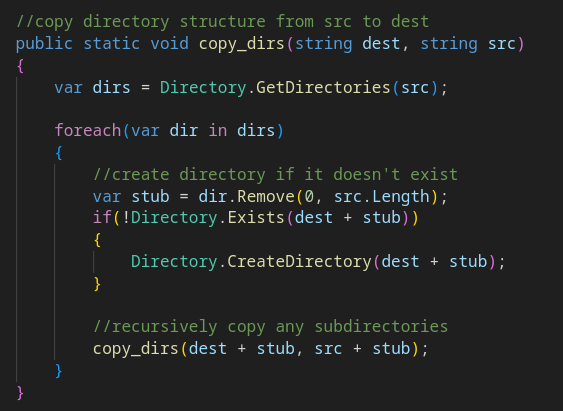Web Gen:
Project page on githubWhat does it do?
This project was designed to make the process of developing this website easier. The idea was to create a program that would allow me to create "templates" that could be inserted into webpages. This would allow me to create a template once and then easily build a website by repeating those templates. It was supposed to be similar to how you reuse a function in code, but the reality ended up being a bit more of a copy-paste machine.
Ultimately I found the design that I had in mind impractical for the type of simple website I was designing. I could probably add in a lot of templates for various parts of the website, but at the end of the day, copy-pasting by hand is faster for some things. For example: the projects page. I could probably benefit from a template if I wanted to add a thousand projects, but I would only be saving about 15 seconds or so.
How does it do it?
The gist of how this program works is by searching for "template directives" which are defined by a specific sequence of characters. I planned on there being multiple types of template directives, but I only ever ended up making the copy directive. The copy directive will accept exactly one argument: the name of a file. When a copy directive is reached, it will search for this file in the templates and copy-paste the contents with proper indenting. Implementing the text search actually was one of the easiest parts of this project. The more difficult parts of the project were figuring out how copying files should work and how to deal with command line input.

Copying Files:
Copying files is a deceptively simple problem. One would think "oh, you just copy the folder, I do that all the time". Turns out, it's harder than that! When you have a directory structure, you're not actually sure what's in the directory until you search it. A directory might contain files, or another directory. Easy right? Well, the directory inside of our current directory might contain another directory. Uh oh, that means we have to implement a recursive search function just to figure out what our directories look like. Rather than construct some kind of tree and walking down it to copy files, I decided to copy directories during the recursive search and make a list of the files. This allows us to have a proper directory structure in the build directory.

Parsing Files:
Parsing files works as you'd expect. The file is searched line by line until a copy directive is reached. When a copy directive is reached, the templates directory is searched for the file specified. If it's found, it gets inserted directly into the text stream. If it's not found, an error gets printed to the console and the program continues on as if there was no copy directive. The files then get written to the appropriate location in the build directory.
